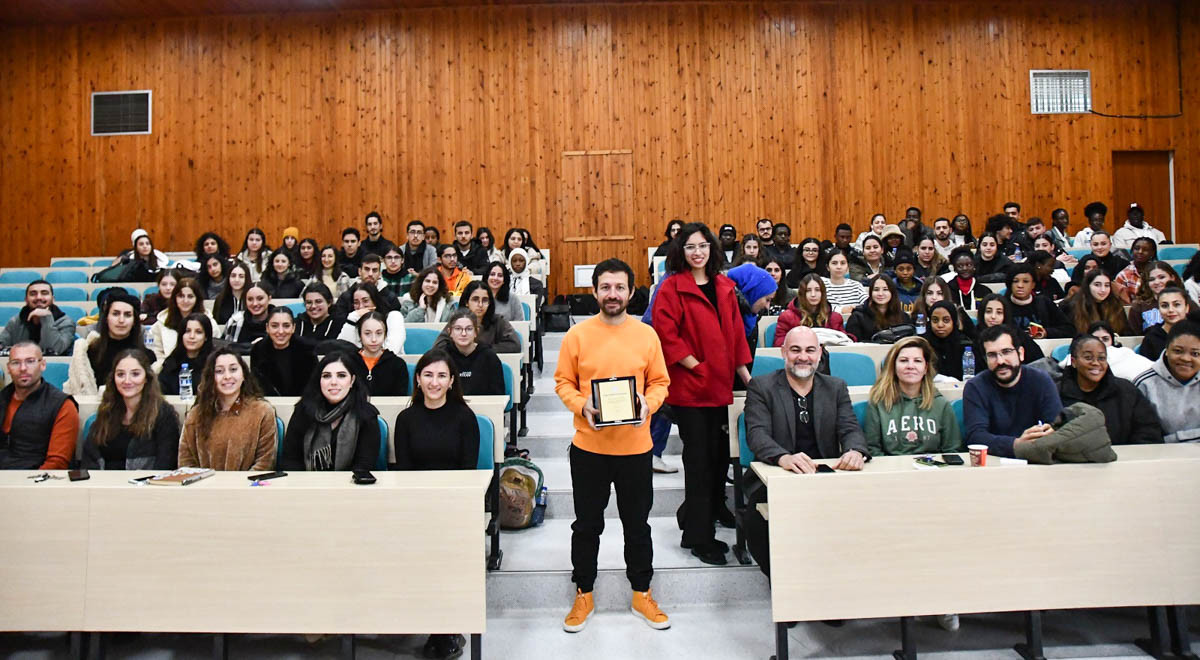Within the scope of the 11th International Career Days organized annually by the Eastern Mediterranean University Alumni Communication and Career Research Center (EMU-MIKA) with the collaborations of the faculties and the schools, Prof. Dr. Emre Keskin from
Ankara University got together with the EMU students during a seminar organized by EMU Arts and Sciences Faculty, Biological Sciences Department.
Prof. Dr. Keskin delivered a presentation titled “Revealing Biodiversity: In Silico Short Stories from the Rainforests to the Pole” during the seminar which took place at Arts and Sciences Faculty Lecture Theatre.
Prof. Dr. Keskin stated that anthropogenic effects cause loss of biodiversity in all habitats, especially inland waters, and as a result, cause drastic changes on the ecosystem. For these reasons, Prof. Dr. Keskin underlined the need to utilize faster research methods to develop conservation and management strategies and detect fluctuations in biodiversity.
During his statement of Prof. Dr. Keskin said: “In line with the conservation of living things and ecological approaches, developments in molecular biology-based methods have resulted in the rapid development of methods for obtaining genetic material using feathers, skin, feces and other biological materials left to the environment they live in, rather than living organisms. Among these methods, environmental DNA (eDNA) is the most widely used method.
The scientific community is beginning to recognize that environmental DNA offers a wealth of information about all the different types of organisms found in ecosystems. Therefore, the attempt to use at least partially this information contained in DNA molecules has increased the interest in it in recent years. This scientific field has been further strengthened by the increased availability of next-generation DNA sequencing, which also enables high-throughput data collection.
The environmental DNA method is a relatively new approach used to monitor the distribution of species. Using this method, it is possible to detect species without actually seeing or catching them. This method uses DNA-based molecular identification, also called barcodes, to identify species, using extracellular DNA or genetic material from cell remains that species leave in the environment. Studies show that eDNA breaks down in the aquatic environment at varying times within a few days to a month. Therefore, detecting the DNA of an aquatic species can be used to confirm the recent existence of that species”.
In the said presentation, eDNA met barcoding studies carried out on a wide ecosystem scale from rainforests to the poles from all over the world were explained, and the background of scientific studies carried out in extreme environments and the process from sampling to visualization of data were emphasized. At the end of the event, EMU Biological Sciences Department Vice Chair Assist. Prof. Dr. Burak Ali Çiçek presented an appreciation plaque to Prof. Dr. Keskin.

